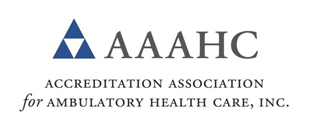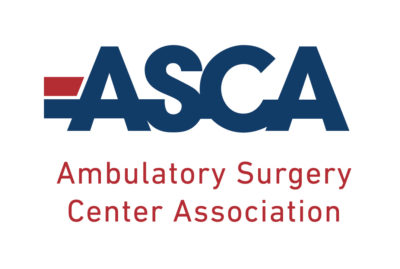Foot & Ankle
Overview
Your feet and ankles do so many things, from absorbing impact from the many surfaces of life to propelling you toward the finish of your first triathlon. It’s no wonder that when your feet or ankles hurt, life and activity can really take a downturn. Our Foot + Ankle Specialists are fellowship trained orthopedic surgeon who is dedicated to provide patients with a thorough and individualized treatment plan.
Conditions & Treatments
The feet are more susceptible to arthritis than other parts of the body because each foot has 33 joints that can be aggravated and there is no way to avoid the pain of the weight-bearing load on the feet. Foot arthritis is described as inflammation and swelling of the cartilage and lining of the joints in the foot and is often accompanied by an increase in the fluid in the joints. Arthritis affects over 40 million Americans and is most common among people over the age of 50. Foot arthritis can result in a loss of mobility and independence, however, early diagnosis and proper medical treatment can help to significantly reduce the symptoms. The causes for foot arthritis are many, including, heredity, overuse injuries, bacterial/viral infections, bowel disorders, use of drugs (prescription or otherwise).
The ankle is a large hinge joint consisting of three bones: the tibia – commonly referred to as the shin bone, the fibula – the thin bone located next to the shin bone, and the talus – a bone in the foot that sits above the heel bone. The noticeable bony bumps around ankle joint are parts of the base of the tibia (medial or posterior malleolus, located on the inside and back of the ankle respectively) or the fibula (lateral malleolus, located on the outside of the ankle). The primary function of the ankle joint is to enable up-and-down movement of the foot, while the subtalar joint which is located below the ankle joint, allows for side-to-side motion. A strong network of ligaments surrounds the joints and binds the bones together.
Achilles Tendon Rupture & Degeneration
The Achilles tendon, the largest and strongest tendon in the body, is a fibrous cord that connects the muscles in the back of your calf to your heel bone and helps control the foot when walking and running. The tendon is subject to a load stress two – four times body weight during normal walking and up to eight times body weight when running, therefore, regaining normal Achilles tendon function is critical.
Achilles tendon rupture is an injury that generally occurs in individuals in their 30s and 40s which affects the back of your lower leg due to a partial or complete break in the tendon.
Achilles tendon rupture is an injury that affects the back of your lower leg when there is a partial or complete break in the tendon. Achilles tendon rupture occurs most commonly in individuals in their 30s and 40s that participate in recreational sports that require sudden acceleration or changes in direction such as basketball, tennis, sprinting, etc. These ruptures occur because the calf muscle generates extreme force through the Achilles tendon in the process of pushing the body forward.
Surgical treatment involves making an incision in the back of the lower leg and suturing the torn tendon together. Depending on the severity of the rupture, the repair may be reinforced with neighboring tendons. The main disadvantage of an open repair of the Achilles tendon rupture is the potential for a scar or improper healing resulting in an infection that is difficult to eradicate. However, physicians take strong measures to ensure a low risk of infection. The advantages outweigh the risks as the rate of re-rupture is significantly lower, the recovery is much faster and the patients can usually experience complete return to normal range of motion.
Patients will go through a rehabilitation program which includes physical therapy exercises that are crucial to strengthen your leg muscle and Achilles tendon. Each patient is unique, so the therapy program will vary based on his/her level of pain, extent of injury, and desired level of activity. Typically, most patients return to normal activities within three to four months, however, athletic activities and the return of strength can take up to a year; this is something to discuss with the physician as well as the physical therapist.
Achilles Tendinitis
The Achilles tendon, the largest and strongest tendon in the body, is a fibrous cord that connects the muscles in the back of your calf to your heel bone and helps control the foot when walking and running. The tendon is subject to a load stress two to four times body weight during normal walking and up to eight times body weight when running, therefore, regaining normal Achilles tendon function is critical.
Achilles tendinitis is a common overuse injury that causes pain along the back of the leg near the heel. This condition is essentially an inflammation of the Achilles tendon which is a natural response the body has to injury and often causes pain, swelling, or irritation. Achilles tendinitis most commonly occurs in runners who suddenly increase the duration or intensity of their run – such as intense training before a major run, or middle-aged weekend warriors who play sports such as basketball or tennis, requiring them to jump or make swift changes in direction.
There are two types of Achilles tendinitis based on the location of the inflammation – Noninsertional Achilles Tendinitis and Insertional Achilles Tendinitis. Noninsertional Achilles Tendinitis occurs when fibers in the middle portion of the tendon began to degenerate, thicken, and swell up – this mostly affects younger, active individuals. Insertional Achilles Tendinitis on the other hand, occurs when the tendon attaches itself to the heel bone and can result in calcification or bone spurs (extra bone growth).
Surgery should only be considered if the pain does not improve after six months of nonsurgical treatments. The specific type of surgery depends on the severity of the damage as well as the location of the tendinitis and should be discussed with the physician when the need is identified.
Patients will go through a rehabilitation program which includes physical therapy exercises that are crucial to strengthen your leg muscle and Achilles tendon. Each patient is unique, so the therapy program will vary based on his/her level of pain, extent of injury, and desired level of activity. Most patients require up to 12 months of rehabilitation before they can return to the prior activity level.
Ankle Arthritis & Replacement
Ankle arthritis occurs when the smooth cartilage covering the ankle joint is partially or completely lost. When this happen, it causes increased blood flow and leads to pain and swelling in the ankle joint and the possible formation of bone spurs. The most common cause of ankle arthritis results from a history of previous ankle trauma such as an ankle fracture which can cause significant loss of cartilage either at the time of injury or over time. Another cause of ankle arthritis is alignment deformity where there is disproportionate pressure on certain areas of the ankle joint that can cause the cartilage to wear out. Alignment deformities are caused by severe flat-feet or high arches or previous fractures to the leg bones. Recurring or multiple ankle sprains can also lead to loss of cartilage and ultimately, cause the individual to develop ankle arthritis. Additionally, inflammatory arthritis such as rheumatoid arthritis or gout can cause severe damage to the ankle joint cartilage, resulting in ankle arthritis.
Ankle surgery may be an option when more-conservative treatments don’t relive ankle pain caused by severe ankle arthritis. Severely damaged ankle joints may require bone fusion or even replacement with the use of an artificial joint:
- Ankle Debridement – For patients with mild to moderate ankle arthritis, ankle debridement can prove to be very helpful. Ankle debridement is the process of cleaning out the ankle joint by removing bone spurs either arthroscopically or opening up the ankle joint.
- Ankle Fusion (Ankle Arthrodesis) – This procedure is generally recommended for patients with painful end-stage arthritis where there is very little or no cartilage remaining and can prove to significantly improve symptoms.
- Ankle Replacement (Ankle Arthroplasty) – This procedure can produce significant pain relief, and when compared to ankle fusion, can result in preservation of motion.
- Deformities Realignment – In some situations where ankle arthritis is a result of disproportionate distribution of pressure on the ankle joint, especially in younger patients, corrective surgery can aid in alignment in redistributing the load where the cartilage is still preserved.
Patients will go through a rehabilitation program which includes physical therapy exercises that are crucial to strengthen your surrounding muscles and ensure proper function of the ankle joint. Each patient is unique, so the treatment and therapy program and duration will vary based on his/her level of pain, severity of the ankle arthritis, and desired level of activity.
Osteochondral Lesions
The talus is the bone of the ankle joint connects the leg to the foot. Unlike most bones, there is no muscle that is attached to the talus; therefore, its position is highly dependent on the position of the neighboring bones. Much of the talus bone is covered in cartilage and the blood supply is not as rich as many other bones in the body. As a result, injuries to the talus are sometimes more difficult to heal than similar injuries in other bones. The tibia and fibula bones sit right above and to either side of the talus bone, forming the ankle joint which is responsible for much of the up and down motion of the foot and ankle.
Osteochondral lesion also referred to as osteochondritis dessicans or osteochondral fractures are injuries to the bottom bone of the ankle joint (talus) where a thin layer of the bone, along with the overlying cartilage, comes loose from the end of a bone. Osteochondral lesions occur most often in men, especially after a traumatic injury to the ankle joint such as a severe ankle sprain. If the loosened piece of bone and cartilage stay close to where it separated, the fracture may heal by itself and the individual may have very few or no symptoms of osteochondral lesion. However, if the fragment comes completely loose and gets caught between moving parts of the ankle joint or if the pain is severe and persistent, surgery may be required to avoid further complications.
Certain osteochondral lesions might require an operative treatment in order to restore normal function and shape of the talus, and ultimately, the ankle joint. The main goal of this approach is to minimize, if not eliminate, symptoms and limit the risk of arthritis. Depending on the location and nature of the osteochondral lesion, surgery may be done either by opening the skin or arthroscopically.
Recovery time after an osteochondral lesion depends on the nature of the lesion and the treatment approach. Most approaches require a time of restricted movement and minimal weight bearing for weeks or in some cases, months. Surgical procedures, such as grafting, might require a longer period of recovery.
Treatments may include the removal of the injured cartilage and bone (debridement), fusion of the injured fragment, microfracture or drilling on the lesion, or grafting of bone and cartilage. The physician will discuss these options and decide the best course of action.
Peroneal Tendinitis
There are two peroneal tendons that run on the outside of the ankle, along the back of the fibula – the peroneus brevis and peroneus longus. Tendons connect muscle to bone and allow them to exert force across the joints. The peroneus brevis has a shorter muscle and starts lower in the leg and runs around the back of the fibula on the outside of the leg and connects to the fifth metatarsal (pinky toe). The peroneus longus on the other hand has a longer course; it starts higher on the leg and runs underneath the foot to connect to the first metatarsal (big toe) on the inside of the foot. These peroneal tendons help to control the position of the foot during walking and are also responsible for turning the ankle to the outside.
Peroneal tendinitis is the inflammation of the peroneal tendons and usually occurs because these tendons are subject to overuse and excessive repetitive forces during standing and walking. This is a natural response the body has to injury and often causes pain, swelling, or irritation. Peroneal tendinitis most commonly occurs in athletes and individuals with high-arched feet or feet with a misaligned heel that is inclined or tilted inwards. Also, individuals who have recently tried a new exercise or have significantly increased their level of activity in a short period of time are prone to developing peroneal tendinitis.
Surgery is only be considered if there is evidence of significant tearing of the peroneal tendons or a bony prominence (such as a bone spur) that is physically irritating the tendons. The specific type of surgery depends on the severity of the damage and should be discussed with the physician when the need is identified.
Patients with peroneal tendinitis usually recover fully, but this can take quite some time. Patience is extremely important since an overuse injury require time and a period of rest. Proper healing of the peroneal tendons is extremely important before an individual goes back to activity. Each patient is unique, so the therapy program will vary based on his/her level of pain, extent of injury, and desired level of activity.
Foot Arthritis
There are various types of foot arthritis, with the most common being the following:
Osteoarthritis – Osteoarthritis is the most common form of foot arthritis and occurs when the protective cartilage on the ends of your bones wears down over time. It’s often called a degenerative joint disease where the cartilage experiences a significant amount of wear and tear over a long period of time.
Rheumatoid Arthritis (RA) – Rheumatoid arthritis is quite possibly the most serious form of arthritis as it is a major crippling disorder. Unlike osteoarthritis, rheumatoid arthritis affects the lining of the joints, causing a painful swelling, resulting in joint deformity and bone erosion. Rheumatoid arthritis is three to four times more likely to occur in women and may affect various systems of the body such as eyes, heart, lungs, skin, and the nervous system.
Gout (Gouty Arthritis) – Gout is a complex form of arthritis caused by a buildup of the uric acid salts in the joints. Gout is characterized by sudden, severe attacks of pain, typically in the big toe as it is subject to the most amount of pressure in walking. Gout most commonly occurs in men over the age of 40, however, women become increasingly susceptible to gout post menopause.
Psoriatic Arthritis – Psoriasis, a skin disease distinguished by red patches of skin with silvery scales, can affect joints as well in the form of psoriatic arthritis. Approximately 5% of individuals diagnosed with psoriasis are later diagnosed with psoriatic arthritis, but the joint problems can often begin long before the skin lesions appear.
Traumatic Arthritis – Traumatic arthritis is caused by repeated trauma to the articular cartilage. This is most common among individuals who were/are athletic or active. Injuries to joints such as a fracture or sprain can cause major damage to the articular cartilage, which leads to arthritic changes in the joint over time.
Surgery may be an option when more-conservative treatments don’t relive pain caused by severe foot arthritis. Options must be discussed extensively with the physician to identify the appropriate surgical procedure.
Recovery after a surgery, can take several weeks if not months. Each patient is unique and their recover will depend on the treatment method prescribed by the physician.
Hallux Rigidus
The hallux, commonly known as the big toe is one of five digits located on the front of the foot. The primary function of the big toe is to provide additional leverage to the foot in assisting it to push off the ground during running, walking, or pushing things. The big toe and the little toe collectively assist in maintaining the body’s balance.
Hallux Rigidus, sometimes referred to as Stiff Big Toe, is basically a progressive arthritis of the big toe joint that often affect athletes and other active individuals which creates pain and stiffness of the big toe. This joint is called the metatarsophalangeal (MPT) joint and is very important because it has to bend every time a step is taken. If the joint starts to stiffen, walking can become painful and difficult. The loss of joint cartilage on the top half of this joint leads to increased pressure across the joint as the toe bends upward. If this worsens and the remaining cartilage cover the joint surface also experiences major wear-and-tear, the result can be a significantly worse and more painful arthritic joint.
In some cases, surgery might be deemed necessary by your physician in order to avoid further problems in the joint or the foot. Some common operative treatments are:
- Cheilectomy – this procedure is typically recommended when the damage is mild or moderate and is essentially a “clean out” procedure. It involves removal of the bone spurs as well as a portion of the foot bone to provide more room for the toe to bend.
- Arthrodesis – this procedure is recommended when the damage to the cartilage is severe. In involves the removal of the damaged cartilage and the placement of pins, screws, or a plate to fuse or fix the joint in a permanent position. After this procedure, the big toe will no longer be able to bend at all, but this is most reliable way to reduce pain in severe cases.
- Arthroplasty – this procedure is ideal for older patients who don’t put too much pressure on the joint and the feet are idea candidates as this is a joint replacement surgery. The joint surfaces are removed and an artificial joint is implanted. As a result, the joint motion is preserved and the pain is relieved.
The recovery time varies based on the type of operative treatment an individual undergoes. A cheilectomy might only a few days, though swelling may last several weeks or months. Arthrodesis will require the individual to protect the toe in a boot for upwards of six to eight weeks, but will require around three months to be fully functional. Lastly, arthroplasty will vary significantly from patient to patient depending on the desired level of activity and the age of the individual.
Hallux Valgus or Bunions
The hallux, commonly known as the big toe is one of five digits located on the front of the foot. The primary function of the big toe is to provide additional leverage to the foot in assisting it to push off the ground during running, walking, or pushing things. The big toe and the little toe collectively assist in maintaining the body’s balance.
Hallux Valgus, most commonly referred to as a bunion is a common foot condition when a bony bump forms on the inside of the forefoot at the base joint of the first metatarsal (big toe). A bunion is formed when the first metatarsal pushes against the second metatarsal, forcing the joint of the big toe to enlarge and stick out. Generally, this is due the uneven weight dispersal on the joints and tendon in the feet. In some cases, smaller bunions (bunionettes) can develop on the join of your fifth metatarsal (pinky toe).
The contribution of footwear on the development of bunion is an unresolved discussion, however some causes include: previous injuries to the foot, any congenital deformities, or a family history of bunions. Bunions may also be associated with certain types of inflammatory arthritis such as rheumatoid arthritis.
Surgery is only be considered for bunions that are extremely painful and not for cosmetic correction purposes. Despite the fact that symptom-free bunions can grow in size over time, operative treatment is not recommended unless there is unbearable pain due to the prolonged recovery time along with the potential for complications. In-depth discussion needs to occur between the patient and the physician when considering bunion surgery and the type of surgery.
Recovery after a surgery, can take several weeks if not months. Each patient is unique and their recover will depend on the treatment method prescribed by the physician.
Posterior Tibial Tendon Dysfunction
The posterior tibial tendon is one of the most important tendons of the leg which attaches the calf muscle to the bones on the inside of the foot. The main function of the posterior tibial tendon is to hold up the arch and provide support to the foot while walking.
Posterior tibial tendon dysfunction, commonly referred to as acquired adult flatfoot deformity is a chronic foot condition where the soft issues on the inside of the foot and ankle are subject to repetitive pressure during standing and walking. Posterior tibial tendon dysfunction occurs when the posterior tibial tendon becomes inflamed or torn and as a result the tendon is no longer able to provide stability and support for the arch of the foot, resulting in flatfoot. Flatfeet can sometimes cause problems in ankles and knees since the condition can alter optimal alignment of the legs.
Surgery should only be considered if the pain does not improve after six months of nonsurgical treatments. The specific type of surgery depends on the severity of the posterior tibial tendon dysfunction and should be discussed with the physician extensively when the need is identified. Some common operative treatments are:
- Tenosynovectomy – This procedure involves a cleaning-out process of the posterior tibial tendon. This procedure helps reduce the inflammation and pain, but the posterior tibial tendon may continue to degenerate and the pain might return.
- Osteotomy – This procedure involves cutting and moving of bones within the foot in an attempt to recreate a “normal” arch. If the posterior tibial tendon dysfunction is severe, a bone graft may be required to lengthen the outside of the foot; screws or plates may be used to reinforce the bone graft.
- Gastrocnemius Recession – This is a surgical lengthening of the calf muscles and is beneficial for patients who have limited range of motion of the ankle joint. This procedure prevents the posterior tibial tendon dysfunction or flatfoot from recurring, but has the potential to create some weakness with climbing stairs or pushing off.
- Tendon Transfer – In this procedure, another tendon from the foot is attached to the diseased posterior tibial tendon. If the disease is severe, the posterior tibial tendon is removed and replaced with the transfer tendon.
- Arthrodesis – This procedure is essentially a fusion of the joints in the back of the foot as a means to realign the foot and make it more “normal.” This often requires the removal of any remaining cartilage in the joint. Since this procedure glues the joints together into a larger bone, side-to-side motion is completely lost after this operation.
Recovery from operative treatments varies based on the procedure and the individual’s condition. Each patient is unique and their recover will depend on the treatment method prescribed by the physician, but it may be 12 months before there is any great improvement in pain.
Call now for a consultation






